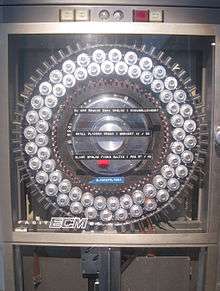SMIL (computer)

SMIL (Swedish: Siffermaskinen i Lund, "The Number Machine in Lund") was a first-generation computer built at Lund University in Lund, Sweden. SMIL was based on the IAS architecture developed by John von Neumann.
Carl-Erik Froberg belonged to the group of five young Swedish scientists 1947-48 that IVA sent to the U.S. to gather information about the early computer development, and then came to strongly influence the development in Sweden. Froberg visited with Erik Stemme Institute for Advanced Study, and John von Neumann's research group. Back in Lund, he played a leading role in the creation of SMIL (Digit-machine in Lund), which was the first computer developed in Lund and among the first in Sweden. SMIL was introduced in 1956[1][2] and then was in operation until 1970.
In February 1962 SMIL was fitted with a compiler for ALGOL 60. The compiler was constructed by Torgil Ekman and Leif Robertson.
Carl-Erik Froberg was also behind the early emergence of numerical analysis as a separate university subject. In this context, he wrote himself and collaborated with others on several textbooks in computer education, for example, Textbook on Numerical Analysis (1962) and Textbook of Algol (1964). These books were widely distributed and translated into several languages.
Parts of SMIL are exhibited at Malmo Technical Museum.
On January 4, 2006, an emulator of SMIL named SMILemu was released with a Java and Mac OS X version.
Trivia
"Smil" is Swedish word for "grin".
See also
References
- ↑ Jarlskog, Cecilia (2013). Portrait of Gunnar Källén: A Physics Shooting Star and Poet of Early Quantum Field Theory. Springer Science & Business Media. p. 141. ISBN 9783319006277.
- ↑ "COMPUTERS, OVERSEAS: 4. Institute of Theoretical Physics, Univ. of Lund, Sweden". Digital Computer Newsletter. 9 (2): 15. Apr 1957.